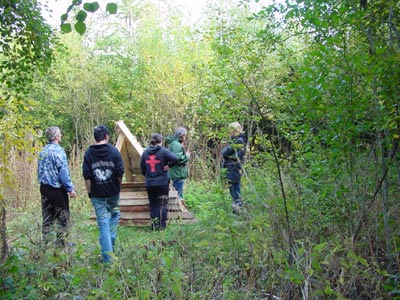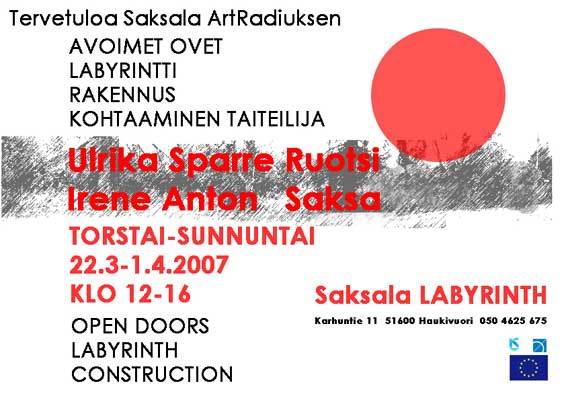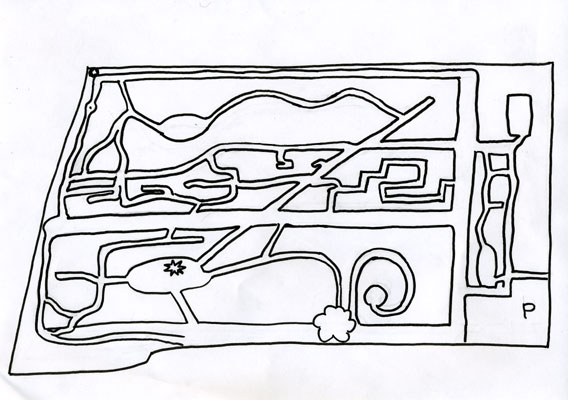ArtRadius Saksala |
|
international artist-in-residence program in rural Finland |
- NEWS
- NEWSLETTERS
- EU-CITIZEN IN FINLAND
- MIKKELI - WINTER WAR
- HISTORY HAUKIVUORI
- HISTORY SAKSALA
- SAKSALA TODAY
- RURAL ART VILLAGE
- SUPPORT SAKSALA
- AREFS FUND
- SAKSALA IN THE PRESS
- GREEN ECONOMY
- MARJA DE JONG
- GALLERY ABOVO
- SYMPOSIUMS
- ARTISTS-IN-RESIDENCE
- ARTISTS-IN-SAKSALA
- ART-PROJECTS
- CONTESTS
- LABYRINTH
- STUDIO-IN-FIELD
- MUSIC PERFORMANCES
TRANSCULTURAL EXCHANGE - RENT EXHIBITION SPACE
- ARTS & CRAFT
- DEADLINES FOR CALLS
- GENERAL INFORMATION
- TOURIST INFO
- TOURIST LINKS
- CHILDREN AND ART
- PRICES
- CONDITIONS
- RESERVATION
- GUEST IMPRESSIONS
 EU-PROJECT
EU-PROJECT
ART ENLARGES THE AREA experts
|
ULRIKA SPARRE -SWEDEN
STUDIES
Konstfack University of Arts & Crafts, MA Fine Arts Stockholm
Gerrit Rietveld Academy, BA Fine Arts, Sculpture Amsterdam
Konstskolan Idun Lowen, Sculpture Stockholm
Konstskolan Basis, Sculpture/Painting Stockholm
Tower Hamlets College, Foundation Art & Design London
In my artistic practice I investigate belief in contemporary society, not out of
a religious perspective but out of the idea that you create your life and have
to relate to your own existential thoughts and questions. This only by the
influence of our culture.
The starting point was the research “To believe is not to know”. A research with
the aim to force people to answer Yes or No to the questions which you don’t
know the answer to. This to avoid the answer of I don’t know, and to force a
careful consideration of each question.
The project investigates questions and thoughts around our believes. It shows
that our belief is strongly connected to our living environment and points out
how limited we are to the influence of our culture. It has become obvious to me
that individual thinking is something which really doesn’t exist, neither in
Sweden, or anywhere else.
But how we answer these questions which we really don’t know the answers to is
of course an individual choice, but can we ever answer them individually?
My way of working opens up for discussion around subjects such as individuality
and communal thinking and how a development in a society towards individualism
and consumerism influences the people. What are the conflicts that goes along
with development and secularization?
My work questions patterns within each and everyone’s way of thinking, and often
play with pre assumptions and limitations of the mind.
 |
 |
the plan as a vision on the area, the way people can enter it and go into the different paths |
The Labyrinth 5 paths - many travels
The labyrinth of Saksala consists of a structure of 5 main roads with
different character which travels through the area from north to south or
south to north. During your walk through one of these paths you can also
make decisions to leave the path and try the different directions of the
smaller trails. These might take you to another experience, lead you to
another path or just transport you to a dead end.
During the construction of the labyrinth the paths will develop. (It is hard
to overlook the area as it’s now covered with dense vegetation of as trees
and bushes.) During construction more elements will be added, such as
objects in or around the paths, sound and find elements and more new paths.
The most western path (closes to the Art Radius house) is the Sculpture
path. A path where artists in the past has put up their work, and in the
future will add more installations and sculptures. This is also a path which
if you follow it, will take you all around the outside path of the labyrinth
area. Following along this trail you will in the southern part reach the
sculpture tree, a tree which branches functions as a gate to the more
central part of the labyrinth.
The next path is the Pine path, it runs parallel with the sculpture path.
The pine path is running amongst a woodland of pine trees. In the northern
part of the path you will reach the great pine tree. A symbol for the path.
(The wolfs are traveling through this trail during hunting at night.)
The central path of the labyrinth is the Field and Flower path. It’s located
between the two big strokes of pine trees running through the labyrinth
area.
This path opens up like a light green field through the area. It has
beautiful green grass and there are flowers blooming in summer time. (This
is where you might spot the unicorn if you are lucky.) If you wish to leave
the field and the flowers you can choose one of the trails taking you into
the dense pine forest.
The next path, running on the eastern side is the Road path, this road will
take you to the farmers house. Following along this path you find on one
side a wall of pine trees and on the other a fence of weaved sticks.
Sometimes the fence opens up into arches and walking out through one of
these arches you find many little paths to follow amongst the birch trees
leading on to other trails.
Once reaching the farmers house, it is growing sirens around it smelling
beautiful at spring. (The farmer might invite you for coffee if he’s home.)
The path running closest to the roadside of the area is the Dog path. During
the walk on this path along the black and white birch trees, you are close
to the dogs. Now they have spotted you. And they will let you know and hear
that you are near them. They are guarding their territory so you better stay
away or give them a treat.
The dog path is also a path (like the sculpture path) which if you follow it
from south to north or the other way, it will take you all around the
outside path of the labyrinth.
The north side of the dog path reaches into the Northern Gallery forest. The
aim of this area is to work as an exposition path, perhaps you wish to do a
temporary installation or place a sculpture in it’s way. The Northern
Gallery forest will make the labyrinth visible for people traveling on the
road, looking for Art Radius, new impressions and thoughts.
In March 2007 the artist was staying for two weeks in the art centre to
start the executing of the LABYRINTH plan. Together with the German artist
Irene Anton she is selected to build the structure of the LABYRINTH and to
make some installations. The period in March was too short to finish the
work. Different other artists will be invited to continue the LABYRINTH
project
 |
 |
 |
 |
|||
|
|
|
information |Marja de Jong | mobile 00358 (0)50 4625 675 | info@arefs.org |
copyright |
zoeken |
zomergasten |
kunstenaars |
omgeving |
|
art links |
HOME |
search |
summerguests |
artists |
surroundings |
|
links |
privacy |
etsi |
kesävieraat |
taiteilijat |
ympäristö |
|
support |

